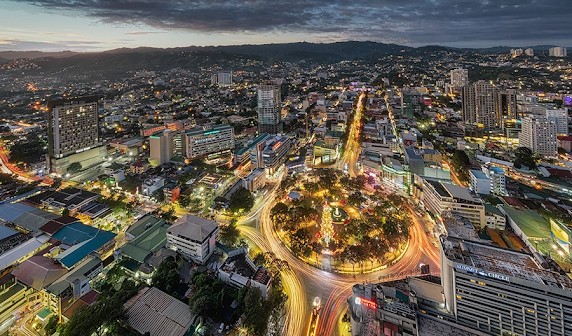Just a City Girl, Born and Raised in Extremely Inconvenient Living Conditions
The summer before
the coronavirus pandemic struck, my family and I went on another one of our
semi-regular Bohol trips. Although both of my parents grew up in Cebu, my
paternal grandmother came from the island known for tarsiers, chocolate hills,
and white sand beaches. As is presumed in a collectivist culture dominated by
clannishness and family values, we were expected to come together as often as
we could to revisit our roots and retrace our lineage.
It was at the near
end of our visit that a notable incident occurred. On our way to the port, our
driver—a cousin of some degree—complained about the traffic. Upon hearing this,
my younger sister innocently replied that the traffic was nothing to what we
have in Metropolitan Cebu.
A grand aunt who had
overheard the exchange piped up: “These are city girls you’re talking to, ‘doy!”
And thus, the title stuck among our relatives. Oddly enough, the memory of that
scene still dwells during times when I ponder upon the stark contrast between
rural and urban life.
In the Philippines, the disparity between social class and progress can be clearly seen with the close proximity of huge metropolitan cities and underdeveloped rural areas. Growing up as a “city girl” means getting used to this odd, juxtaposition of social inequality. More than that, it means being desensitized to particular objects and incidents that are often chalked out as an integral part of city life.
 |
| A slum area in Cebu City. Taken from an article that details how Cebu City mayor Mike Rama aims to displace informal settlers to ease flooding and pave way for a Singapore-like city. Photo from https://maharlika.tv/2022/08/09/cebu-city-to-uproot-squatters-that-cause-floodings/ |
Slow violence is all around us, from the congested roads we travel to the developmental projects we often await and look forward to. So embedded is it in our daily lives that it becomes hard to pinpoint the agent. According to Galtung, slow violence is defined as violence that harms citizens and properties through systemic means. It is called slow violence because its effects are not immediately seen and felt. This type of violence acts invisibly, yet effectively.
Extreme heat is an effect of slow violence and industrialization is one of the prime enactors of this phenomenon. This is evident in Cebu City—the second largest city in the country and a prime business hub. Being a city child through and through allowed me to witness the mass urbanization of my hometown. Among foreign investors and tourists, Cebu may be known for its fast-growing economy. Locals like me, however, associate extreme and unbearable heat (among other things) as a prime characteristic of Cebuano life.
 |
| A family dealing with water shortage amidst extreme heat during the summer. Photo from https://r3.rappler.com/move-ph/129504-no-water-cebu-homes-run-dry |
Cebu City is, to put it aptly, a sprawling metropolitan behemoth. Its economic importance to the country is one of the reasons why it is historically dubbed the Queen City of the South. Thus, history (and geography) dictates that Cebu has always been predetermined for modernization and continuous expansion. Yet, data shows that this progress may do more harm than good.
A recent study proves that poor urban planning, regular construction activities, and the lack of open and green spaces have contributed to the rising temperatures within the city. It is apparent immediate action must be taken to develop a more breathable city. Rather than prioritizing immediate economic gains, perhaps the government should turn its efforts into making Metropolitan Cebu livable for everyone.
 |
| The Fuente Osmeña circle skyline during twilight. This image paints a clear picture of a bustling city, with incessant traffic and high-rise buildings. Photo from https://sugbo.ph/2021/cebu-city-wealthiest-lgu/ |
- Fisher, R.
(n.d.). The unseen “slow violence” that affects millions. BBC Future. https://www.bbc.com/future/article/20210127-the-invisible-impact-of-slow-violence
- Leong, I.
(2021, January 17). Queen City Of The South – Cebu, Philippines. Bel
Around the World.
https://www.belaroundtheworld.com/queen-city-south-cebu-philippines/
- Sengupta,
S. (2020, August 12). Here’s What Extreme Heat Looks Like: Profoundly
Unequal. The New York Times.
https://www.nytimes.com/interactive/2020/08/06/climate/climate-change-inequality-heat.html
- Shih, Rowell & Dy, Danilo. (2013). The Urban Heat Island (UHI) Phenomenon in Cebu City, Philippines: An Initial Study. ESPASYO, Journal of Philippine Architecture and Allied Arts. 5. 84-88.

Comments
Post a Comment